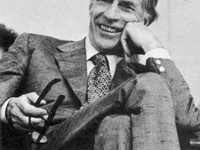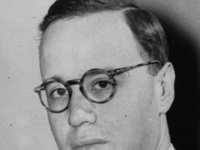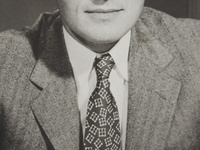“In 1960...the action was on the Democratic side,” recalled Congressman Thomas E. Petri ’62, though he was involved in the Young Republicans and Students for Nixon.
But many alumni from the Republican side also remember campaigning vigorously.
“We organized meetings and held rallies and wrote articles,” said Howard Phillips, who participated in Republican organizations at Harvard and on the national scene as a student, and has since run for president three times himself as a third-party candidate.
Student campaigning stretched beyond Cambridge, too.
The Crimson reported at the time that the Young Democrats took the unprecedented step of taking “complete charge of the campaign in the four precincts adjacent to the University.”
Phillips and three fellow Harvard students went even farther afield—they took a cross-country polling trip in the summer of 1959, assessing the strength of the candidates in 17 different cities before presenting the results of their work—which predicted that Nixon would win “overwhelmingly”—to Nixon at the national Young Republican convention in Denver.
Christopher T. Bayley ’60, who served as president of the Young Republicans at Harvard, said that groups of about 25 students would make trips to New Hampshire on weekends, ringing doorbells to drum up votes in the upcoming Republican primary for either Nixon or his opponent Nelson A. Rockefeller.
Despite his own Republican leanings, Bayley acknowledged that Kennedy generated much more excitement among his fellow students. “Very few people were emotionally enthusiastic about Nixon,” he admitted.
Many alumni recalled a particularly colorful incident which elicited high emotions from both sides. In the spring of 1960, students said, Adlai E. Stevenson—then a potential Democratic nominee—remarked that the U.S. should apologize for the presence of an American U-2 spy plane which had been shot down by the Soviet Union.
The Young Republicans staged a march to the post office on Mount Auburn Street, where they planned to mail Stevenson an umbrella, a symbol recalling Neville Chamberlain’s appeasement of the Germans at Munich.
The Democrats organized what Congressman Barney Frank ’61, a member of the Students for Stevenson group, called “a counterpicket.”
Some alumni recalled that the Democrats mailed President Eisenhower a pair of suspenders because, as Petri put it, they thought that “the country had been caught with its pants down.”
Four students and two passersby were arrested for disturbing the peace during the demonstrations. The students, who returned to their dining halls that night, were met with raucous approval, The Crimson reported at the time.
“Oddly, there was great solidarity between the Young Republicans and the Young Democrats,” said Bruce K. Chapman ’62, then head of Students for Rockefeller, about the aftermath of the arrests. “They were all against the police.”
“Honestly, I think there was more openness to competition, even though an overwhelming number of the students as well the faculty were for John Kennedy,” Chapman said. “There was geniality about the election and a pretty serious respect for both sides.”
Read more in News
Reduce, Reuse, Research?Recommended Articles
-
 Defacement and Dedication in Libraries
Defacement and Dedication in Libraries -
The Cards and How You Play ThemSo we’re left with a Democratic president whose domestic agenda is less ambitious than that of a Republican president from three decades ago and a Republican opposition that decries that same agenda as rank socialism.
-
 Harvard Introduces First Gen Ed Curriculum, Travels to Nixon's Kitchen Debate, and Hosts Olympic Soccer
Harvard Introduces First Gen Ed Curriculum, Travels to Nixon's Kitchen Debate, and Hosts Olympic Soccer -
 Remedying 'Social Evil' and 'Guilty' Liberal Journalists
Remedying 'Social Evil' and 'Guilty' Liberal Journalists -
 Scott Brown To Join Boston Law Firm
Scott Brown To Join Boston Law Firm -
Obama Goes Full NixonWhile those inside the White House wants to deify Obama as its “North Star,” the potentiality of corruption in his administration must not be overlooked. President Obama must proceed carefully if he doesn’t want to end up with an eerily Nixonian legacy of disgrace.
















